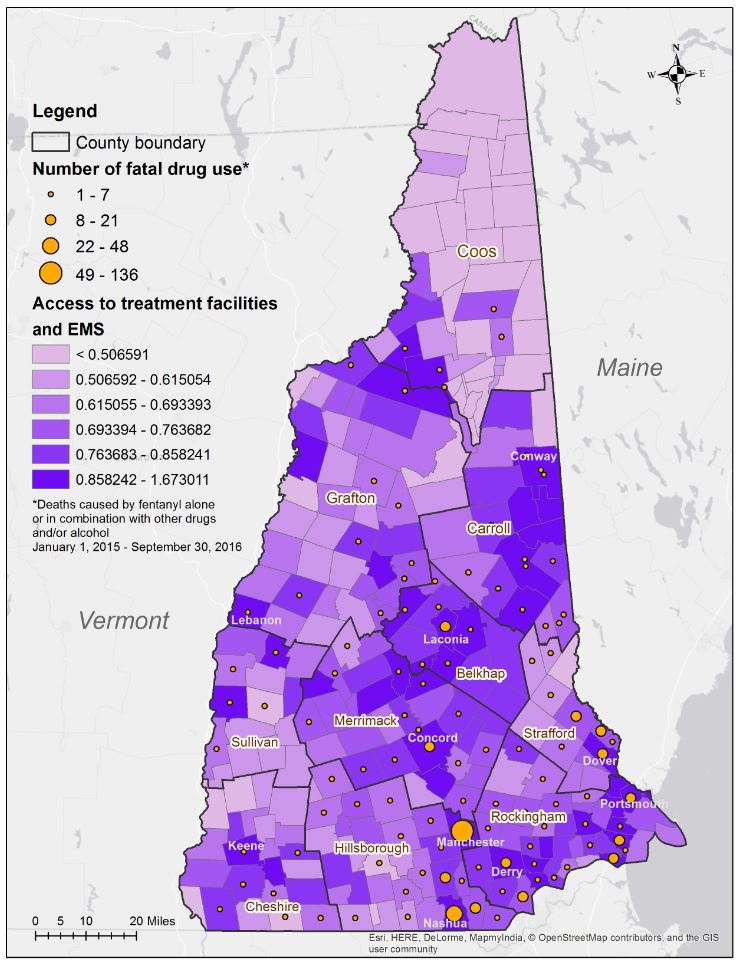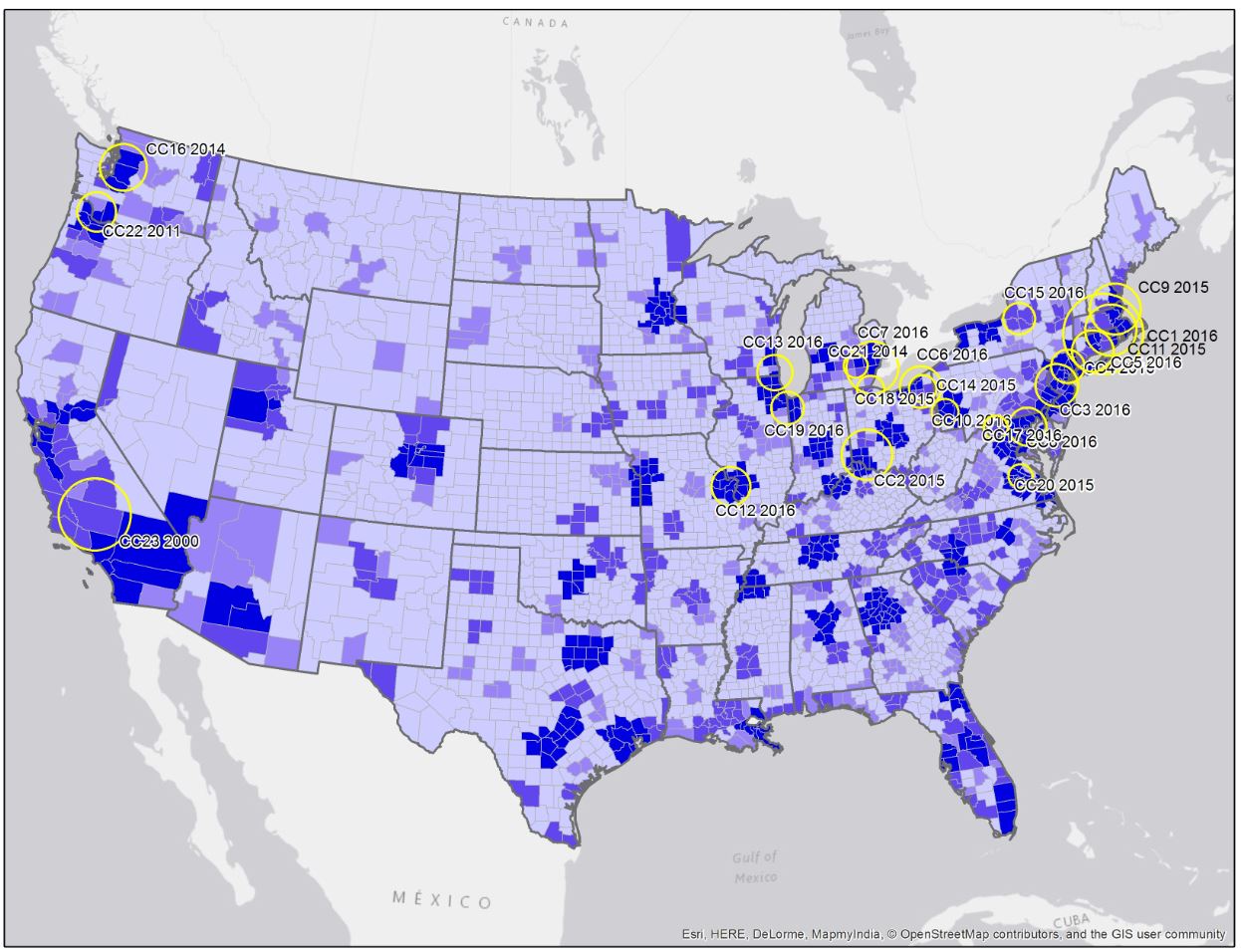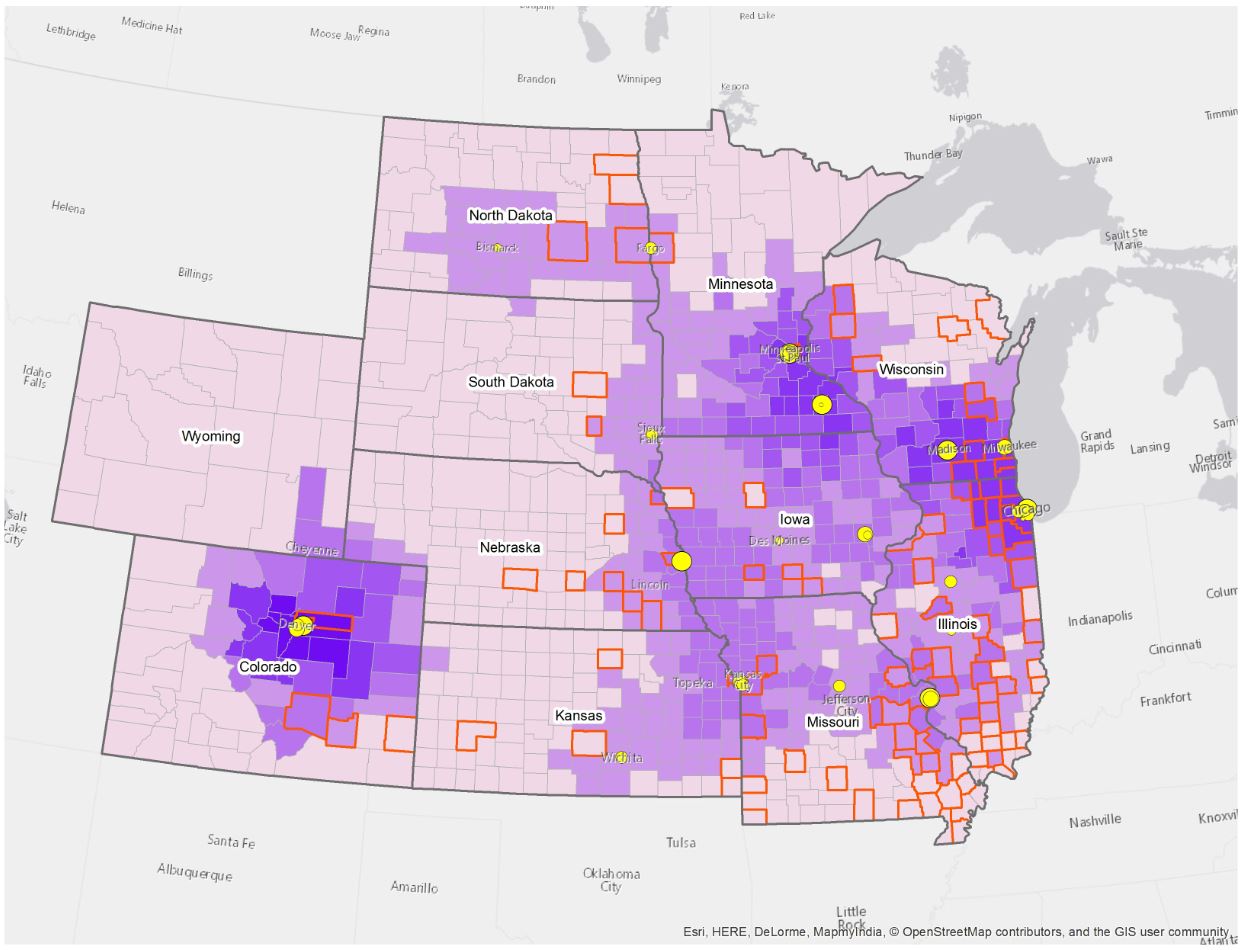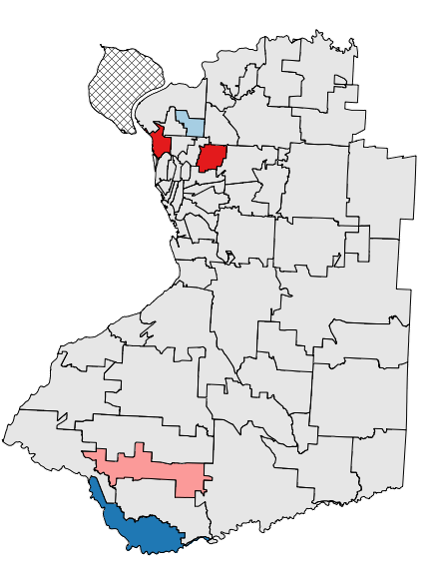Using socially-sensed data to infer characteristics related to drug use
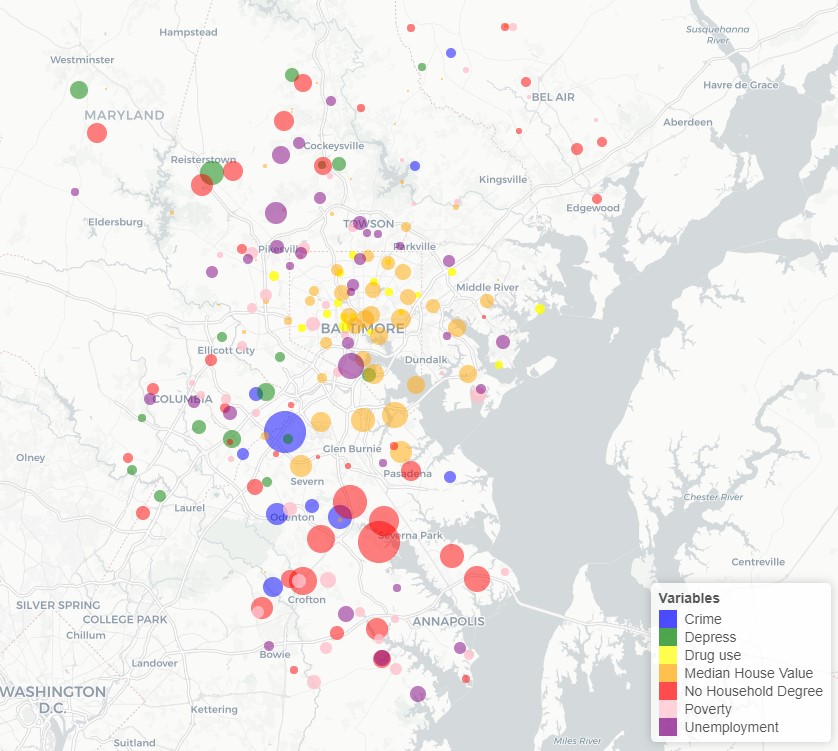
This research investigated how socially sensed data can be used to detect ZIP level characteristics that are associated with spatial and temporal patterns of Emergency Department patients with a chief complaint and/or diagnosis of overdose or drug-related health problems for four hospitals in Baltimore and Anne Arundel County, MD during 2016-2018. Dynamic characteristics were identified using socially-sensed data (i.e., geo-tagged Twitter data) at ZIP code level over varying temporal resolutions. Data about three place-based variables including comments and concerns about crime, drug use, and negative or depressed sentiments, were extracted from tweets, along with data from four socio-environmental variables from the American Community Survey were collected to explore socio-environmental characteristics during the same period.
